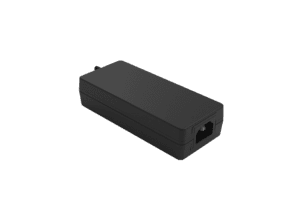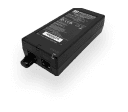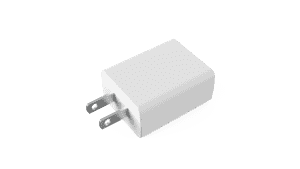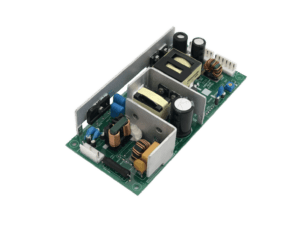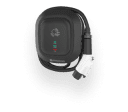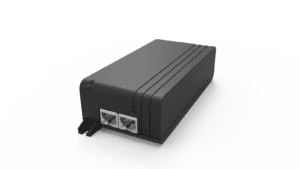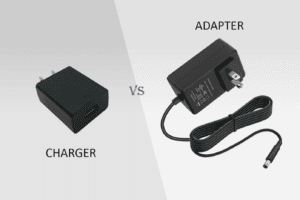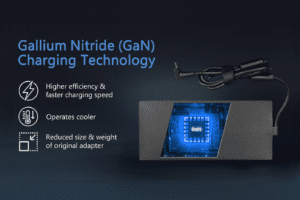BLOG
What Safety Standards Top Manufacturers Follow for Modern Robot Charging Stations
Table of contents
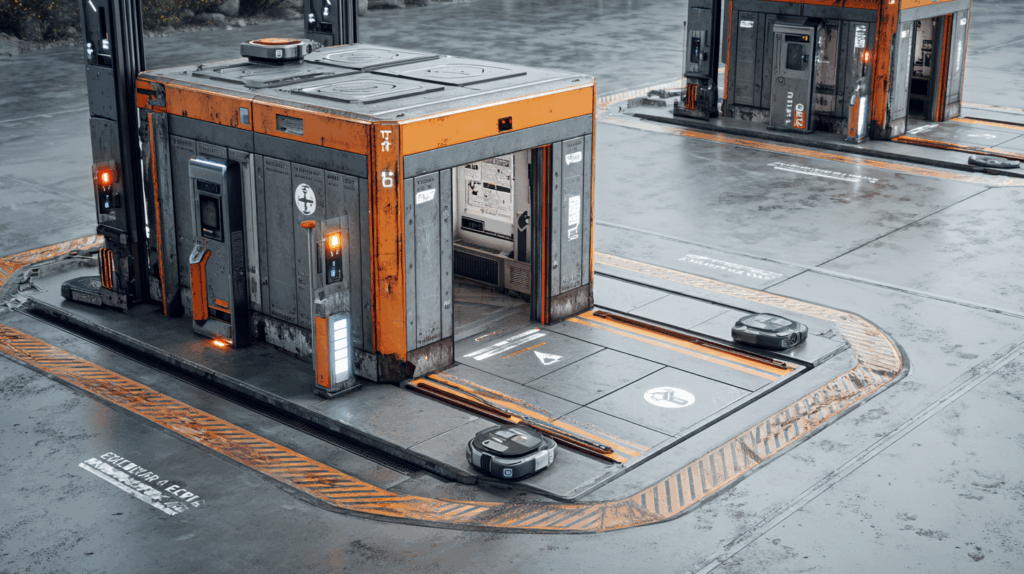
Why are safety standards critical for robot charging stations?
Robot charging stations deal with high currents, multiple voltage profiles, and sensitive battery chemistries. Without proper safety standards, they risk overheating, electrical fires, or damage to the robots themselves. Safety regulations exist to protect not only the equipment but also the operators and environments where robots are deployed. Standards like IEC and UL provide the framework for ensuring safe design, testing, and deployment of charging systems in industries ranging from logistics to healthcare.
Adhering to safety standards also ensures interoperability and reliability. When a station complies with recognized certifications, businesses can trust that it performs consistently across diverse operating conditions. This consistency becomes especially important when scaling robotic fleets, where charging downtime or failures can significantly disrupt workflows. By prioritizing stations built around robust safety standards, manufacturers provide assurance that their products meet global requirements while protecting investments in robotics technology.
Top Benefits
-
Protects equipment and operators from electrical hazards
-
Ensures reliability across multi-environment deployments
-
Provides confidence when scaling robotic fleets globally
Best Practices
-
Always check for IEC/UL certifications before purchase
-
Confirm compatibility with multiple battery chemistries
-
Schedule regular compliance audits for charging systems
Safety standards are the foundation of reliable robotic operations. By choosing charging stations that meet rigorous certifications, companies minimize risk, safeguard employees, and keep fleets running smoothly.
(Suggested Links: Medical Power Supplies | Internal Power Supply Guide)
What certifications are most important for modern charging stations?
The most recognized certifications for robot charging stations include IEC (International Electrotechnical Commission) and UL (Underwriters Laboratories). IEC standards provide a global framework for safety, covering electrical performance, insulation, and environmental durability. UL certification, common in North America, validates that a product has undergone rigorous third-party testing for fire, shock, and electrical hazards. Together, these certifications provide assurance that a charging station is safe for use across multiple regions and industries.
Other important certifications include CE marking for products sold in the European Union, RoHS compliance to limit hazardous substances, and FCC compliance for electromagnetic interference standards. For medical robotics, ISO 13485 may also apply, ensuring adherence to quality management systems specific to healthcare devices. The combination of these certifications shows that a manufacturer is serious about safety, compliance, and global usability.
Top Benefits
-
Global acceptance of IEC/UL certifications ensures wider deployment
-
CE and RoHS compliance improves environmental and regulatory standing
-
FCC certification prevents interference with sensitive electronics
Best Practices
-
Verify that certification marks are authentic and up to date
-
Ensure suppliers provide documentation for audits and inspections
-
Choose manufacturers with a proven history of compliance
When evaluating modern robot charging stations, certifications are the clearest sign of trustworthiness. They confirm that the product has been tested for safety, compliance, and quality, giving operators peace of mind in mission-critical environments.
(Suggested Links: Open-Frame Power Supplies | PoE Injectors)
How do top manufacturers integrate safety into product design?
Leading manufacturers embed safety features into the earliest stages of product design rather than treating compliance as an afterthought. This approach includes integrating protective circuits such as over-voltage, over-current, and thermal shutdown mechanisms directly into the hardware. It also means designing enclosures that are resistant to dust, water, and temperature extremes, ensuring reliability in multi-environment deployments.
Software also plays a major role in safety. Intelligent monitoring systems can detect abnormal charging behavior, issue alerts, or automatically shut down the station to prevent accidents. Manufacturers that adopt a “safety by design” philosophy ensure that every aspect of the charging station—hardware, software, and testing—works together to minimize risks. This holistic approach not only helps products meet IEC/UL standards but also boosts customer confidence.
Top Benefits
-
Built-in hardware protections reduce risk of electrical failures
-
Software-driven safety increases responsiveness to potential hazards
-
Rugged enclosures improve long-term reliability in harsh settings
Best Practices
-
Incorporate redundant protection circuits in design phase
-
Use smart monitoring to track charge cycles and detect anomalies
-
Test stations under real-world conditions before deployment
When manufacturers design safety into their products from the ground up, the result is more reliable, durable, and compliant charging stations. This proactive approach builds trust with customers and ensures robotic fleets stay powered with minimal risk.
(Suggested Links: Battery Chargers | Innovations in Medical Power Supply Design)
CLIENT'S QUOTE
"Phihong’s PoE solutions have made a huge difference for us! Our network runs more efficiently, and we’ve seen real cost savings. We couldn’t be happier!"
Universal compliance builds global trust
For manufacturers, achieving universal compliance with international safety standards is more than a technical requirement—it’s a trust-building exercise. Businesses deploying robotic fleets want assurance that their charging stations are approved for use across multiple markets. A station certified under IEC, UL, CE, and RoHS regulations signals that the product meets consistent safety and quality benchmarks, no matter where it’s installed. This global acceptance reduces barriers for multinational companies scaling robotics across different facilities.
Universal compliance also helps streamline procurement and deployment. Fleet managers don’t have to source different chargers for different regions, reducing complexity and costs. Instead, they can rely on a standardized platform backed by globally recognized safety labels. Manufacturers who invest in universal compliance not only expand their customer base but also strengthen their brand reputation as reliable, forward-thinking partners in the robotics industry.
Top Benefits
-
Expands market access with globally recognized certifications
-
Simplifies fleet deployment across multiple regions
-
Builds customer confidence and strengthens manufacturer credibility
Best Practices
-
Seek manufacturers with multi-region certifications (IEC, UL, CE)
-
Standardize procurement policies around global safety standards
-
Audit supplier compliance regularly to ensure ongoing trust
Universal compliance doesn’t just satisfy regulations—it establishes confidence. By following globally accepted standards, manufacturers show customers they are committed to safety, reliability, and consistent performance across markets.
(Suggested Links: Medical Power Supplies | Internal Power Supply Guide)
Energy efficiency ties into modern safety
Energy efficiency and safety often go hand in hand. Efficient charging stations convert more power into usable energy while producing less heat, lowering the risk of thermal failures. Top manufacturers integrate high-efficiency designs that minimize waste while ensuring stable, predictable charging cycles. By keeping heat generation under control, these stations extend the life of both the equipment and the robot batteries.
Modern safety regulations increasingly emphasize sustainability, requiring companies to reduce energy waste and carbon emissions. RoHS and Energy Star compliance, for example, demonstrate a commitment to both environmental safety and operational responsibility. For robotics-driven industries, choosing energy-efficient charging stations ensures cost savings while maintaining a safe working environment. Manufacturers that align energy efficiency with safety build products that not only protect people and assets but also align with corporate sustainability goals.
Top Benefits
-
Reduces heat buildup and related safety risks
-
Cuts operational costs through improved efficiency
-
Supports sustainability and compliance with environmental standards
Best Practices
-
Prioritize chargers with ≥90% energy efficiency ratings
-
Use stations with thermal management systems built in
-
Implement monitoring tools to track energy and safety metrics
Energy-efficient charging stations deliver a dual benefit: they keep robotic fleets safe while lowering costs and reducing environmental impact. Manufacturers that design with both safety and efficiency in mind create solutions that are practical, sustainable, and future-ready.
(Suggested Links: USB-C PD Adapters | Open-Frame Power Supplies)
Ruggedized designs enhance operational safety
Safety isn’t only about certifications—it’s also about durability in real-world conditions. Top manufacturers understand that robot charging stations may operate in warehouses, outdoor logistics hubs, or healthcare facilities where dust, moisture, or temperature swings are common. Ruggedized designs with IP-rated enclosures, reinforced connectors, and wide temperature tolerances ensure reliable performance in these environments. Without these protections, stations risk breakdowns that compromise both safety and uptime.
Rugged stations also support compliance by maintaining safe operations even under stress. Thermal sensors, sealed housings, and redundant protections prevent damage or electrical hazards in unpredictable conditions. For industries such as construction, agriculture, or medical logistics, ruggedized safety features are not optional—they are mission-critical. Manufacturers who invest in durable designs help customers protect their fleets, reduce downtime, and extend the service life of their charging infrastructure.
Top Benefits
-
Reliable performance in harsh or unpredictable environments
-
Enhanced operator safety through ruggedized protections
-
Reduced downtime from environmental damage or wear
Best Practices
-
Select chargers with IP65 or higher ratings for demanding environments
-
Regularly inspect connectors and seals for long-term integrity
-
Use ruggedized stations in industries with strict uptime requirements
Ruggedized designs elevate operational safety by ensuring charging stations remain dependable no matter the conditions. By focusing on durability, manufacturers provide customers with reliable solutions that safeguard investments and maintain continuous performance.
(Suggested Links: Battery Chargers | PoE Injectors)

Contact Our Team Today!
Our dedicated sales team and international partners are prepared to support you with your latest projects and initiatives globally.
How Phihong supports safety in robot charging solutions
Phihong has a long history of delivering power products that balance performance, compliance, and safety. For robotic charging stations, Phihong integrates internationally recognized standards such as IEC, UL, CE, and RoHS into the design and manufacturing process. This ensures that every solution is tested against rigorous benchmarks before reaching customers. By focusing on global compliance, Phihong makes it easier for businesses to scale their robotic fleets across regions without worrying about safety certification gaps.
In addition to compliance, Phihong emphasizes durability and reliability. Many of their products include built-in protections against over-voltage, over-current, and thermal overload, reducing the risk of downtime or equipment damage. Ruggedized designs also ensure that charging solutions function reliably in challenging environments such as outdoor logistics hubs or healthcare facilities with strict cleanliness standards.
Energy efficiency is another hallmark of Phihong’s solutions. By designing high-efficiency power supplies and charging systems, Phihong reduces heat buildup and supports sustainable operations. Customers benefit from lower long-term costs, improved safety, and extended product lifespans. Whether powering autonomous delivery robots, industrial fleets, or medical devices, Phihong provides charging solutions that combine safety, compliance, and reliability.
(Suggested Links: Battery Chargers | Contact Phihong)
FAQ
What safety certifications should businesses prioritize when choosing robot charging stations?
When evaluating robot charging stations, businesses should prioritize certifications that address electrical safety, environmental protection, and regional compliance. IEC standards are globally recognized, covering everything from electrical insulation to environmental durability. UL certification, widely used in North America, ensures products have been independently tested against risks such as fire, shock, and overheating. CE marking is essential for equipment used in the European Union, confirming compliance with health, safety, and environmental regulations.
Other important certifications include RoHS, which restricts hazardous materials, and FCC compliance, which ensures stations don’t emit electromagnetic interference that could affect other electronics. For specialized applications like healthcare robotics, ISO standards may also come into play, particularly around quality management. Prioritizing these certifications ensures that businesses not only meet legal requirements but also protect their operators, equipment, and investment. When suppliers provide transparent documentation of compliance, it demonstrates a proactive commitment to safety. For companies scaling globally, choosing chargers with multiple certifications simplifies procurement and deployment, reducing risk and ensuring interoperability across regions.
How do safety standards reduce risks in multi-environment robot charging?
Multi-environment robots often operate in locations with dust, moisture, or fluctuating temperatures. Without adherence to safety standards, charging stations in these conditions could fail prematurely or expose operators to electrical hazards. Standards such as IP ratings provide protection levels against dust and water, while UL and IEC certifications verify that the electrical systems can handle stress safely. By meeting these standards, charging stations can operate reliably in warehouses, outdoor delivery zones, or healthcare facilities.
Standards also reduce risks by mandating protective features like over-current shutoffs, temperature monitoring, and short-circuit protection. These measures prevent accidents that could cause downtime, equipment loss, or even injuries. In industries that rely heavily on uptime, like logistics or manufacturing, compliance is a safeguard against costly interruptions. By following safety standards, manufacturers deliver confidence to their customers, while businesses benefit from predictable, safe, and continuous charging operations that align with industry best practices.
Why is UL certification so important for robot charging stations?
UL certification is widely recognized as one of the strictest safety benchmarks in North America. It involves rigorous third-party testing of electrical products to confirm they can withstand hazards such as overheating, fire, and electrical shock. For robot charging stations, UL certification assures businesses that the product meets consistent safety standards and has been tested under realistic operating conditions.
The importance of UL certification goes beyond legal compliance. It provides a level of trust and accountability that businesses can rely on when deploying large fleets of robots. If an incident occurs, proof of UL certification can also serve as a layer of legal and insurance protection. Additionally, UL-certified stations typically include built-in safety features such as over-voltage protection, thermal cutoffs, and robust enclosures. This makes them particularly attractive for companies operating in demanding environments. In short, UL certification is more than a mark—it’s a guarantee of safety, quality, and reliability in robotic operations.
How does energy efficiency intersect with charging station safety?
Energy efficiency isn’t just about reducing electricity bills—it also contributes directly to safety. Efficient charging stations generate less heat, lowering the risk of thermal failures, fires, or degraded battery performance. High-efficiency stations, often rated at 90% or higher, ensure that most of the power drawn is used effectively rather than wasted. This efficiency extends the life of both the station and the robot batteries it powers.
From a regulatory perspective, energy efficiency aligns with standards such as Energy Star, which promote sustainable and safe design practices. Lower heat production also reduces the strain on protective components like thermal sensors and circuit breakers, allowing them to work more reliably over time. For businesses, energy-efficient stations mean lower operating costs, reduced environmental impact, and greater operational safety. By selecting energy-efficient chargers, organizations achieve both financial and safety gains, making them a cornerstone of responsible fleet management.
Why should businesses consider Phihong for safety-compliant charging solutions?
Phihong is a trusted manufacturer with decades of experience in delivering power solutions that balance performance, compliance, and safety. Their charging systems are designed to meet global safety standards, including IEC, UL, and CE, ensuring products can be deployed across diverse environments without regulatory concerns. By integrating protective circuits, rugged enclosures, and energy-efficient designs, Phihong delivers solutions that minimize risks while maximizing uptime.
Beyond technical compliance, Phihong emphasizes customer support. Businesses can access documentation, consultation, and engineering expertise to ensure safe integration of charging systems into their fleets. Whether used in logistics, healthcare, or industrial robotics, Phihong products are engineered to provide reliability and compliance from day one. For companies looking to scale globally while maintaining strict safety standards, Phihong offers not only certified products but also the assurance of long-term partnership. This combination of proven compliance, innovation, and support makes Phihong a strong choice for safety-conscious organizations.

